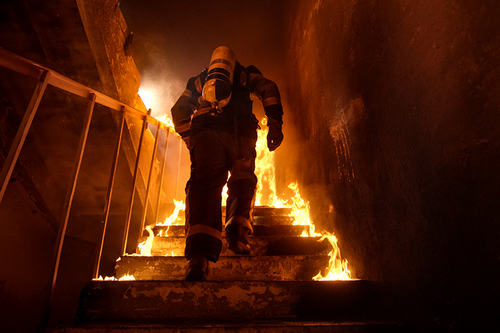OSHA’s Recent Standard Update to Clothing Labels
OSHA has made six changes to NFPA 2112-2018 that will be important for industrial workers. These updates will help ensure that FR gear will perform properly and as claimed in the event of exposure to fire. Here are changes that will help workers stay safe in oil protection and other industries where fires are a common hazard.
Flash Fire Terminology
The biggest change in the standard comes with the title: “Standard on Flame-Resistant Clothing for Protection of Industrial Personnel Against Short-Duration Thermal Exposures from Fire.” The change from “flash fire” to “short-duration thermal exposure from fire” is meant to be more descriptive of a variety of hazards. The standard covers more thermal events than just flash fires, including vapor cloud fires, jet flames, liquid fires, solids fires, and warehouse fires.
Cold Weather Insulation
NFPA 2112 now has guidance for FR cold weather insulation. The requirements for FR cold weather insulation clothing are the same as textile body materials with some differences. The big change is how flame-resistance tests are performed. The Vertical Flame Test requires cold weather FR gear to fold face cloth over the bottom edge of a sample before testing.
Head and Hand Protection
In the update, shrouds, hoods, balaclavas, and gloves are now addressed. The fabric for this gear should not melt and drip, separate, or ignite during the heat resistance test. It also needs to comply with requirements for spaced method and contact method Heat Transfer Performance, char length, after flame time, and thermal shrinkage.
ASTM F1930 Instrumented Thermal Manikin Test
This test determines an FR fabric’s percent body burn. The changes will improve standardization between testing facilities. The test now requires specific sizes and cuts of FR garments placed over 100% cotton shirt and briefs on a manikin with sensors, ensuring that the only variable is the fabric itself. The manikins must also be calibrated for three heat flux exposures.
ASTM D6413 Vertical Flame Test
This test determines an FR fabric’s char length, or how much a fabric might burn when exposed to flames. NFPA 2112-2018 references the latest version of the test from 2015, which changes how tear weights are chosen. This makes the standard a little more stringent, as some fabrics that passed before no longer will.
Garment Labeling
The requirements for FR clothing labels expanded to account for all FR items, including those that were just added. The following information must be included on all FR gear labels:
- The words: “This clothing item meets the requirements of NFPA 2112-2018. NFPA 2113 requires upper and lower body coverage”
- The model name, number, or design
- The manufacturer’s name, identification, or designation
- The manufacturer’s address
- The country of manufacture
- The manufacturer’s garment identification number, lot number, or serial number
- The size
- The fiber content of each primary fabric layer. This does not include interlinings and labels but does include cold weather insulation if present
- The words: “DO NOT REMOVE”
These changes will help with the traceability of the fabrics used to make FR gear and ensure that it’s from a quality lot.
FR Clothing from PK Safety
Employers in industries that have fire hazards should know the appropriate OSHA standards. They should also outfit their employees with FR PPE that’s designed to stand up to the hazards that they face on the job, and PK Safety can help. If you have questions about the gear that you need for your job, message one of our safety experts online or give us a call at 800.829.9580.
Be sure to check out PK Safety's new private FR clothing line, GRIT, offering the highest quality UL Classified gear at a great value that's backed by our 2-year quality guarantee.
Recent Posts
-
Promoting Safety: National Work Zone Awareness Week is April 15-19, 2024
Each year, the National Work Zone Awareness Week (NWZAW) places the spotlight on the importance o …Apr 11th 2024 -
Understanding 4 Gas Monitors: How They Work & Why They Are Important
In today’s increasingly dynamic industrial landscape, 4 gas monitors have emerged as critical com …Apr 8th 2024 -
April Showers Require Workers to Wear Hi-Vis Safety Rain Gear
While April showers bring May flowers, they also bring challenges, particularly for those working …Apr 1st 2024






